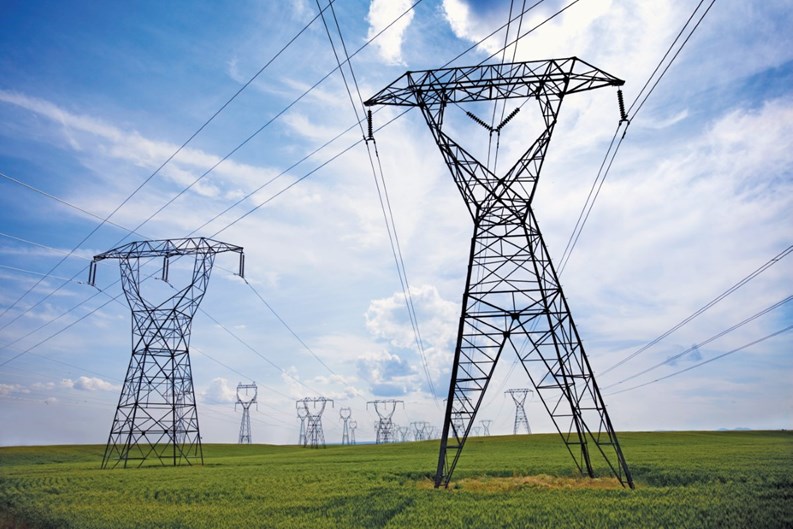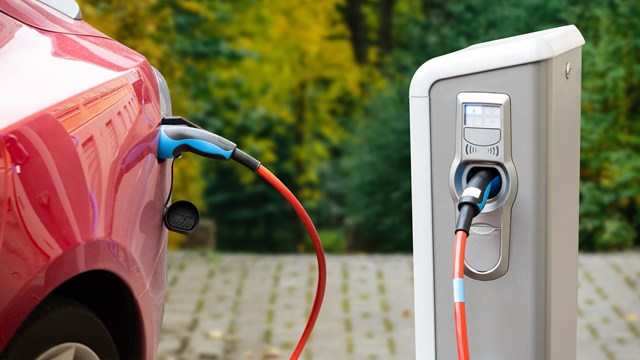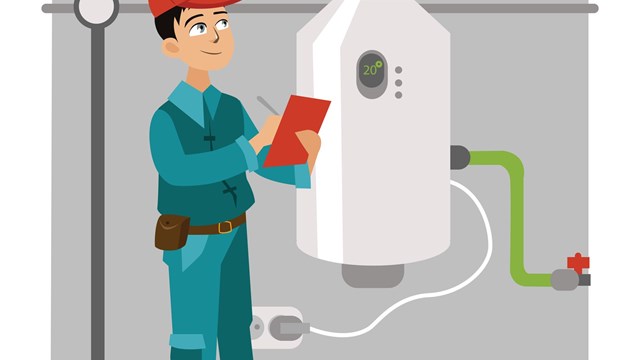Saving money is always a top concern of any association board, but with tough economic times and high fuel prices, saving on energy costs can be a challenge that requires some tough choices.
Since 1999, New Jersey businesses and residents have been able to choose the utility company from which they purchase gas, electricity, and heating fuel; but with choice often comes challenge. Along with their new options and the predicted benefits of a more competitive marketplace, New Jersey residents have also had to deal with the changes and questions raised by the state government's deregulation of energy providers. Choosing the best energy service company (ESCO) for an HOA is a task that benefits both from research and the input of experienced professionals.
Big Changes
In 1999, the New Jersey Board of Public Utilities (NJBPU)—the governing body for the state's electric, oil and natural gas services—introduced a bill to deregulate the state's energy industry for residential customers. (New Jersey's commercial energy market had been opened up earlier in what some say was an attempt to keep local corporations happy and committed to staying put.)
The goal of the Electric Discount and Energy Competition Act (EDECA) was to enable New Jersey energy consumers to shop around and choose the energy provider that best suited their budget and service requirements. A bit of background: New Jersey's licensed electric and natural gas suppliers are, as their names indicate, suppliers. They provide the hardware—the lines and cables—and once those are in place, they also provide the power that flows to New Jersey commercial and residential customers. That power may have been purchased from companies several states away, or it could come from oil, coal or renewable energy sources. Energy may even be bought and sold much like the stocks in an investment portfolio. It's important for customers to know where the cool flow from their central air system comes from, or the juice that runs the building elevator. Post-deregulation, the customer now has a say in where their particular energy supply comes from.
The free-market rationale hinged on the prediction that enough healthy competition between providers would keep prices down while offering better service and reliability to customers. Under the auspices of the federal Department of Energy, New Jersey took measures to safeguard free market competition for electricity and gas, including the requirement for the NJBPU to "unplug" power stations with higher costs than other available energy sources.
But there has not exactly been a stampede to third-party suppliers, according to NJBPU spokesperson Doyal Siddell. “As of June 30, 2010, there were 15,997 residential customers and 43,516 commercial and industrial (C&I) customers buying their electric supplies from third party suppliers,” he says. “This represents about one-half of one percent of the state’s 3.3 million residential accounts and about nine percent of the state’s 490,000 C&I accounts.”
Siddell also points out that, “Third party suppliers are not utility providers. They are independent businesses that sell electric supplies to customers as an alternative to the supplies sold by the utilities. There are about 30 third party suppliers licensed by the BPU to do business in New Jersey at the present time.” (A complete list of these suppliers can be found on the BPU website at http://www.nj.gov/bpu/commercial/shopping.html.) “In some cases,” Siddell continues, “third party suppliers may also offer their customers other services like energy management, or demand response enrollment as 'value added' benefits that can save them additional money.”
According to Michael Fallquist, CEO of Connecticut-based Viridian Energy, which recently entered the New Jersey market, “An important aspect to this story is that when a consumer switches to an ESCO, really nothing changes for them. They still get the bill from the utility, the utility still is providing delivery services. If your power goes out in PSE&G territory, they're still going to fix it just the same as always, because you're still really their utility customer.”
Doing the Research
If you're just starting out in the process of researching ESCOs, a good place to begin is NJBPU's website, listed above. It's a good idea to check the price per kilowatt hour of several companies you may be considering to give you a beginning basis for comparison.
“If you're a homeowners association, you should be considering a couple of factors,” says Fallquist. “One is the track record the company has in terms of delivering on their value proposition. Another is whether similar organizations have signed up with them—referrals are a strong consideration.” You can also see if the ESCO is offering any incentives to new customers, and if the prices quoted include taxes.
The process of switching ESCOs is generally very simple, say industry experts.
“Whether you go to a company like Viridian or any of our competitors in the marketplace, the switching process I think across the board takes maybe five to 10 minutes,” says Fallquist. “The biggest hurdle people have is having a copy of their utility bill handy when they call or go online to switch.”
Even for an HOA, the person or people involved in switching ESCOs only need to be the folks authorized to agree to a contract on behalf of the building or association—it's not necessary to involve attorneys or management, unless their input is particularly desired.
That simplicity has its drawbacks however, says Siddell. “Customers may enter into agreements with third parties that end up costing them more than what they would have paid with their utility.” But “the BPU has adopted consumer protection rules that mitigate many potential pitfalls,” he adds.
The NJBPU has prepared a shopping guide called “Shop ‘til Your Energy Bills Drop” to explain the research process. It’s available in PDF form on the NJBPU website, or customers can request a hard copy by mail.
Pricing Options
There are a few different options when deciding on the price you're going to pay for utilities, says Siddell.
Generally, you may opt for a bill with a fixed price, or a specific rate for a specified period of time. For example, an ESCO may give you a quoted price of eight cents per kilowatt hour for a period of one year. That price won't change for the entire length of the contract. This is beneficial if prices elsewhere are increasing during the year. On the other hand, if prices drop, you're still locked into the now-higher rate, and you must honor your contract at that price. Your ESCO may give you the option to renew at a more favorable rate, but that depends on how the original contract is worded.
Another option is paying the "index price," which is a discount off the current utility rate. For instance, you may find an ESCO that will give you a one percent discount off the rate the major utility companies charge. The index price will give you the ability to enjoy the downs of the market while still being open to exposure if prices rise. How much you pay is dependent on what the market does. Many ESCOs won't guarantee savings unless you buy at an index price.
Some energy industry pros recommend letting the season help determine what type of a rate you choose; going with a fixed price in the summer, when air conditioners and other appliances in frequent use, can help keep bills under control. In the winter however, buying power at an index price can help you take advantage of the fluctuations in the market.
Another option is to consult your building's management company, which may be looking to aggregate some of their buildings under the same ESCO. A third-party aggregator may be able to negotiate better terms of service with 20 buildings versus your one building. A downside to this is that your building would be lumped together with several others, and may not enjoy such specialized service.
If you already have a contract with one provider and wish to switch, says Joe Graham, co-principal of JJT Energy, an ESCO based on Long Island, there are options. “If there's a 30-day out clause in the contract, they can turn around and send their ESCO provider a letter saying they wish to switch, or go to back to [the public utility,] or switch to company X, and they have to be released.”
By contrast, he continues, “On a fixed contract, if someone buys a 12-month fixed contract and in month five they say, ‘Well, rates went down and I feel that it's not working for me,’ Sorry, but you bought a fixed contract because you wanted to lock down a price. We laid out a credit line and deposit to secure that price for you, so that contract stays in force. If you want to get out, then there is a penalty to pay.” How much that penalty is depends upon a number of factors, but is usually somewhere in the neighborhood of 20 to 25 percent of what was laid out on deposits and other sums.
Your Energy Bill
Switching ESCOs will usually result in a change in the billing process. Instead of receiving one bill from the utility company, you may receive two bills: one from the utility, and the other from your new provider. This is not a mistake: the public utility will still read the meter and charge for delivery. The third-party ESCO supplies the power and also bills you. Although you're getting a specific rate from your new ESCO, it may take more than just a glance at your bill to tell if you are actually saving money; you may have to add the two together to see the total energy bill.
Not everyone who looks to switch ESCOs is looking for outright savings, however. Sometimes, a customer is more in search of stability in his or her bill. Some customers may be paying more than market rate, but knowing approximately how much they're going to spend each month helps keep a budget in check, and may help avoid surprises, such as unexpectedly-high bills during those hot summer months. For some, that advance knowledge is more valuable than a less-certain dollar amount saved.
For others, there's an environmental component. According to Fallquist, “ESCOs are really about giving people product offerings. Savings come in all forms. One important aspect of our business actually is the green aspect. Our whole value proposition is that in every market we deliver, all of our customers get a minimum of 20 percent renewable content. There are a lot of factors that ultimately go into savings under deregulation.”
Before You Sign on the Dotted Line
In order to determine whether switching to an ESCO is worth it, your board/management team might want to consider speaking with a consultant who can provide you with a monthly or quarterly analysis of your HOA's energy bills and give you insight into the bigger picture: Are you saving money? Are you currently utilizing the best type of service for your association? Without a long-view familiarity with the market, it could be a tough call.
And once you are a customer, it's not guaranteed that your rates will stay the same from year to year, cautions Graham. “At the end of the day, [the ESCO] controls the number they put into the system to charge you. So they may tell you they’re going to save you 10 percent for three months, let's say. Then when you're not looking, they may creep your price up and be the same as the utility company's. I tell people, buyer beware: check your bills, check your numbers, pay attention. If you do, you do save money.”
For most HOAs, the cost of energy is a significant expense. The good news is, as a consumer, you can take control of your energy future. Take the time to understand the opportunities available to you, do your homework, and ask questions. Whether it's worth it to your community to switch all boils down to awareness and comparing options.
Hannah Fons is associate editor of the New Jersey Cooperator. Additional reporting by David Chiu.







Leave a Comment